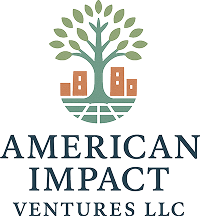The Federal Community Finance Corporation (FCFC)
A Blueprint for a Unified Community Capital System
Executive Summary
This paper proposes the creation of the Federal Community Finance Corporation (FCFC), a federally chartered, public–private development bank modeled after Fannie Mae, Freddie Mac, and the Federal Home Loan Bank System. The FCFC would consolidate fragmented community development programs such as the CDFI Fund, SBA, NMTC, LIHTC, HTC, and Opportunity Zones under a single, market-based and mission-driven structure. Its purpose: to standardize, securitize, and scale capital investment in underserved communities nationwide.
I. The Case for Modernization
Community development finance in the U.S. remains fragmented across more than 40 programs administered by multiple agencies—Treasury, HUD, SBA, USDA, and Commerce. The result is redundancy, high transaction costs, and inconsistent access to capital. Despite hundreds of billions in appropriations, capital flow into low-income communities remains less than 1% of total U.S. capital markets.
II. Mission and Charter
The FCFC would be established through a federal charter with the mission of creating a standardized, securitized, and scalable capital system for community investment. Its objectives include: 1. Aggregating capital from public and private sources. 2. Providing liquidity through standardized loan instruments. 3. Integrating existing community finance programs. 4. Establishing measurable social and economic impact metrics.
III. Institutional Structure
The FCFC would operate under a public–private cooperative model. Federal oversight would be provided by a board including Treasury, HUD, SBA, USDA, and Commerce. Member ownership would mirror the Federal Home Loan Bank System, with CDFIs, community banks, and credit unions participating as shareholders. A Capital Markets Division would manage bond issuance and securitization, while a Community Programs. Division would manage legacy programs and compliance. A Digital Impact Exchange (DIX) platform would power origination, monitoring, and impact trading.
IV. Product Architecture
Core programs under FCFC would include restructured versions of CDFI Fund, SBA 504/7(a), NMTC, LIHTC, HTC, and HUD Section 108. These would be standardized into unified loan and credit products supported by FCFC guarantees. New instruments would include Community Development Securities (CDS), Credit Enhancement Wraps (CEW), Impact Participation Certificates (IPCs), and FCFC-Guaranteed Loans, all designed for liquidity and investor participation.
V. Technology and Data Integration
A centralized data hub would unify borrower, performance, and impact data. Advanced analytics and AI would enable predictive risk and impact modeling. A blockchain-based compliance ledger would ensure transparency and reduce fraud. Integration with digital platforms such as the DIX would facilitate real-time matching of investors, projects, and intermediaries.
VI. Legislative Framework
The proposed “Federal Community Finance Corporation Act of 2026” would create the FCFC as a government-sponsored enterprise with authority to issue FCFC-backed securities and guarantees. Implementation would proceed in phases: Phase 1: Merge CDFI Fund and SBA loan programs. Phase 2: Integrate NMTC and HTC into a unified structured finance platform. Phase 3: Launch the national secondary market and securitization facility.
VII. Economic and Social Impact
The FCFC could unlock over $1 trillion in private capital within a decade. It would reduce the cost of capital for community borrowers, streamline compliance, and promote uniform impact reporting. By replacing fragmented subsidy programs with scalable financial infrastructure, the FCFC ensures lasting, market-based support for disadvantaged communities.
VIII. Governance and Oversight
FCFC governance would include an independent Inspector General, annual Congressional reporting, and mandatory public impact audits. Community Impact Ratings (CIR) would be assigned to all member institutions based on their social and economic performance.
IX. Political Strategy
This reform offers bipartisan appeal—combining fiscal discipline with inclusive economic growth. Stakeholders include the U.S. Chamber of Commerce, National League of Cities, NAACP, major foundations, and banks. Messaging should position the FCFC as “Rebuilding America’s Financial Inclusion Infrastructure.”
X. Conclusion
The Federal Community Finance Corporation represents a transformative step toward a unified, efficient, and accountable community finance system. Like Fannie Mae and Freddie Mac revolutionized homeownership, the FCFC would modernize how America invests in its communities—creating sustainable prosperity at scale.
Federal Community Finance Corporation (FCFC)
White Paper Proposal — October 2025
Prepared by: Michael Qualizza, Managing Member, American Impact Ventures, LLC
Contact: Q@Americaninpactventures.com | www.americanimpactventures.com
Author Bio
Accomplished financial executive with over 25 years of expertise in investment banking, structured finance, and tax credit programs, including NMTC, HTC, and LIHTC. Demonstrated success in advising syndicators, developers, and investors on financial structuring and deal execution, securing over $800 million in private equity funding for state and federal tax credit transactions impacting over $1.8B in total Development Costs. Experienced in closing sophisticated tax credit deals and fostering economic development through high-impact real estate projects with triple bottom-line returns. Proven leader with a track record of driving social and economic impact through strategic tax credit financing and real estate development.
XI. Revitalizing America’s Low-Income and Distressed Communities
The Federal Community Finance Corporation (FCFC) is focused on expanding access to credit and investment in America’s most economically distressed regions. Mainly census Tracts where traditional financial systems have failed to deliver consistent opportunities and access to capital. This includes both urban and rural low-income communities, with an emphasis on restoring job growth, business formation, and local economic stability. Key mechanisms include:
- Establishing a Community Enterprise Growth Facility (CEGF) to expand small business and development lending in extremely distressed census tracts.
- Ensuring that at least 70% of all FCFC-guaranteed loans directly benefit federally defined low-income or extremely distressed census tracts.
- Strengthening community banks, credit unions, and mission-driven intermediaries through access to standardized underwriting, liquidity facilities, and digital origination tools.
- Integrating the Community Reinvestment Act (CRA) into FCFC operations—allowing regulated banks to meet CRA obligations through FCFC-backed financing that demonstrates measurable local benefit.
- Providing transparent data and impact analytics that measure outcomes such as private investment leveraged, permanent jobs created, and new business formation.
- Technical assistance and capacity-building grants for minority-owned small businesses and social enterprises.
- Transparent reporting to ensure measurable outcomes on minority and low-income participation. Through these measures, FCFC will serve as a national engine for economic revitalization—driving private-sector capital into the communities that need it most, reducing dependency on fragmented grants, and creating a sustainable framework for long-term prosperity
Through these measures, FCFC will serve as a national engine for economic revitalization—driving private-sector capital into the communities that need it most, reducing dependency on fragmented grants, and creating a sustainable framework for long-term prosperity.
Appendix A: Legislative Outline — Federal Community Finance Corporation Act of 2026
Section 1. Short Title — ‘Federal Community Finance Corporation Act of 2026’.
Section 2. Establishment of the FCFC as a Government-Sponsored Enterprise.
Section 3. Consolidation of Treasury’s CDFI Fund, SBA Programs, and Tax Credit Authorities.
Section 4. Authorization for FCFC-Guaranteed Securities.
Section 5. Creation of Minority and Community Ownership Facility.
Section 6. Governance, Oversight, and Capital Requirements.
Section 7. Reporting and Accountability Requirements.
Section 8. Effective Date — FY2026 Implementation.
Appendix B: Pilot Implementation Timeline (FY2026)
- Q1 FY2026: Charter formation, board appointments, and initial rulemaking.
- Q2 FY2026: Transition of CDFI Fund operations and pilot guarantees for minority-focused lenders.
- Q3 FY2026: Integration of SBA 504/7(a) and NMTC programs under unified FCFC structure.
- Q4 FY2026: Launch of the Digital Impact Exchange (DIX) and first FCFC-backed Community Development Securities issuance.
- FY2027: Expansion to national coverage including LIHTC, HTC, and other state partnership programs.
XII. Integration of LIHTC and Federal Grant Programs
The FCFC framework envisions a complete consolidation of major federal housing and community grant programs into a unified, capital-markets-compatible structure. This integration is crucial to aligning the fragmented landscape of federal subsidy programs with the FCFC’s long-term mission of efficiency, transparency, and scale.
Specifically, the Low-Income Housing Tax Credit (LIHTC) program, currently administered through the IRS and state housing agencies, will be merged into FCFC’s Structured Finance Division. By bringing LIHTC under the FCFC umbrella, the Corporation will:
- Standardize underwriting, reporting, and compliance requirements for affordable housing investments.
- Enable secondary market liquidity for tax credit equity and debt instruments.
- Coordinate LIHTC deployment with NMTC, HTC, and Opportunity Zone investments to support holistic community revitalization.
- Provide a single digital application and approval portal, reducing processing times by up to 50%.
Beyond LIHTC, the FCFC will unify complementary federal grant and loan programs such as HUD’s Community Development Block Grant (CDBG), HOME Investment Partnerships, and USDA’s Rural Development programs. Consolidation will eliminate overlapping administrative costs and enable cross-program financing structures, where blended grants, tax credits, and FCFC-backed loans can support the same project.
This alignment of tax credit and grant programs ensures that community investments are not only adequately funded but also optimized for long-term sustainability, creating a single transparent pipeline from federal appropriations to community outcomes.

